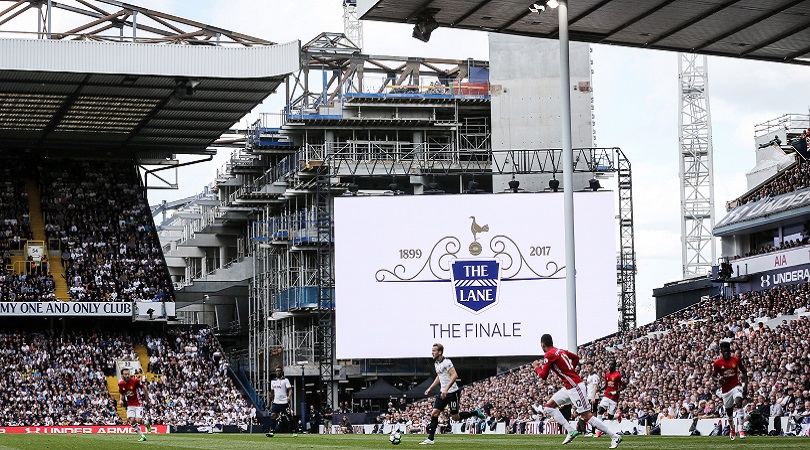
Old stadiums
Tottenham Hotspur may have begun the next chapter in their history by moving into a cracking new 62,000-capacity home, but that won't stop many supporters – home or away, at that – from feeling nostalgic about poor old White Hart Lane.
With that in mind, we’ve picked out more famous old English grounds now consigned to the history books...
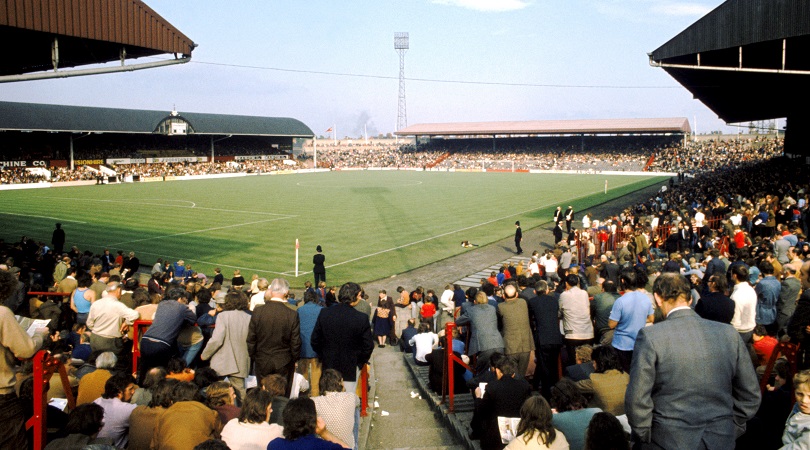
Ayresome Park (Middlesbrough)
Ayresome Park was Teesside writ large, a vivid symbol of a town that once styled itself Ironopolis. Elements of the ground, the North Stand included, lasted all the way from the grand opening in 1903 to the last match in 1995, as Middlesbrough won promotion back to the Premier League.
The club gates that were infamously locked by bailiffs in 1986, forcing Boro to play a home game at Hartlepool, have now been re-erected at the new Riverside Stadium. Ayresome Park had a brief afterlife as Boro’s training ground, but is now a housing estate.
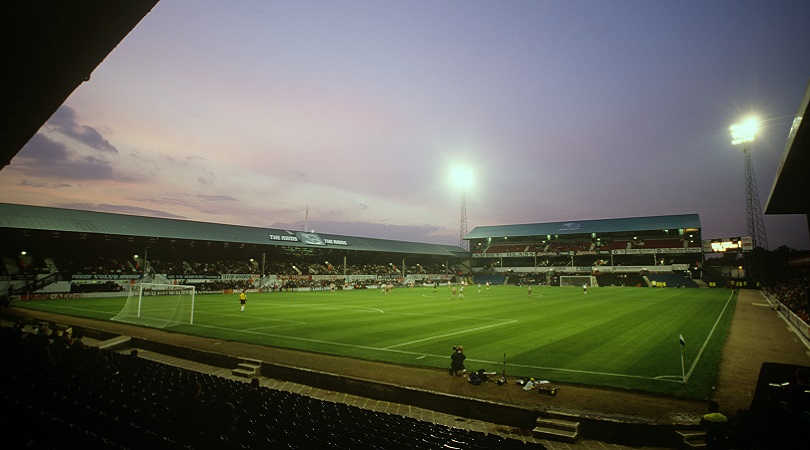
Baseball Ground (Derby County)
Brian Clough often spoke about keeping the ball on the ground, but that was easier said than done on some of the mudheaps his Derby side were forced to play on at the Baseball Ground.
The venue, which did initially host baseball, improved considerably during Clough's time at the helm: the 41,826 attendance record was set in 1969, and the new Ley Stand made it one of the few contemporary British grounds to have seating and standing on all four sides.
After Pride Park opened in 1997, Derby’s reserves played at the Baseball until 2003, when it was knocked down for housing.
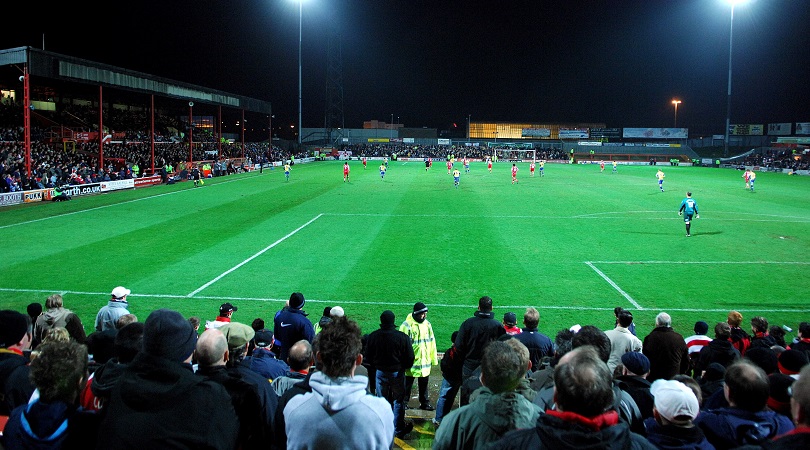
Belle Vue (Doncaster)
Belle Vue was famed for its pitch – at 110 yards long and 72 yards wide, it was the biggest in the UK professional game. Opened in 1922, the ground’s capacity reached 40,000 at its 1940s peak, but by the time of Doncaster’s exit it accommodated just over a quarter of that.
Belle Vue hit the headlines in 1995 when the Main Stand was damaged by fire, with chairman Ken Richardson later sentenced to four years in prison after being found guilty of conspiracy to commit arson. Doncaster moved into the all-seater Keepmoat Stadium a mile and a half away in 2007.
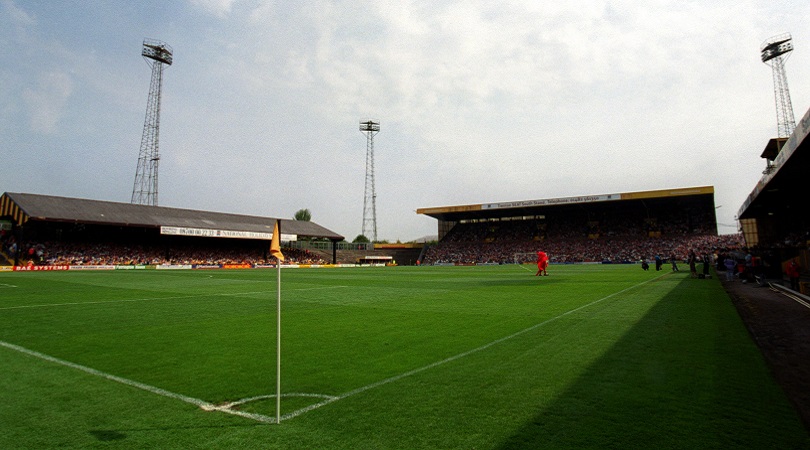
Boothferry Park (Hull City)
Boothferry Park it stood out as a beacon of newness when it opened in 1946, and Hull fans immediately took to their new home – 55,019 of them turned out for an FA Cup tie with Manchester United in 1948-49.
For a while the ground even had the luxury of its own railway station: Boothferry Park Halt. And by 1963, it had also developed what became part of a staple pub-quiz question: six free-standing floodlights. In 2002, the Tigers left for the swish comforts of the KC Stadium, and Boothferry Park slowly rotted.
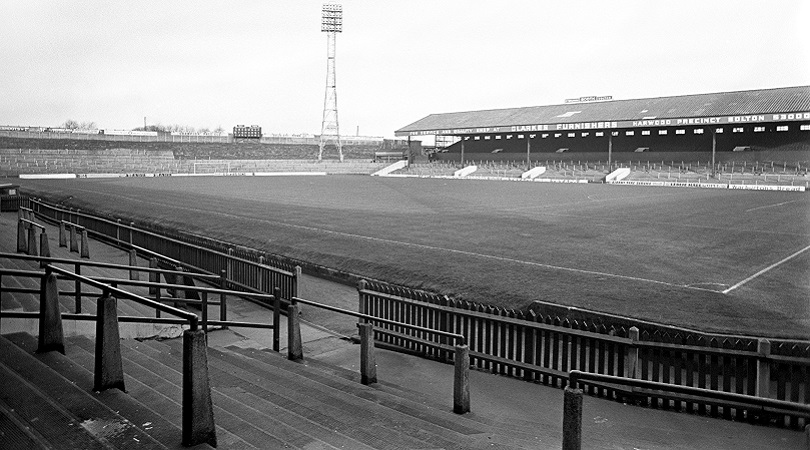
Burnden Park (Bolton Wanderers)
Burnden Park is the life-model for LS Lowry's Going To The Match. Professional football first took real root in the north-west of England, and Burnden Park was typical of its era: quirky stands – on the Manchester Road side, the “Wing Stand” suddenly kinked in toward the goal – and vast terraces.
The enormous embankment at the town end of the ground was the site of a 1946 disaster which claimed 33 lives; four decades later, half of it was sold to a supermarket to stave off bankruptcy. Just over a decade later, in 1997, the club relocated to outlying Lostock and the shining edifice of the ground initially known as the Reebok Stadium.
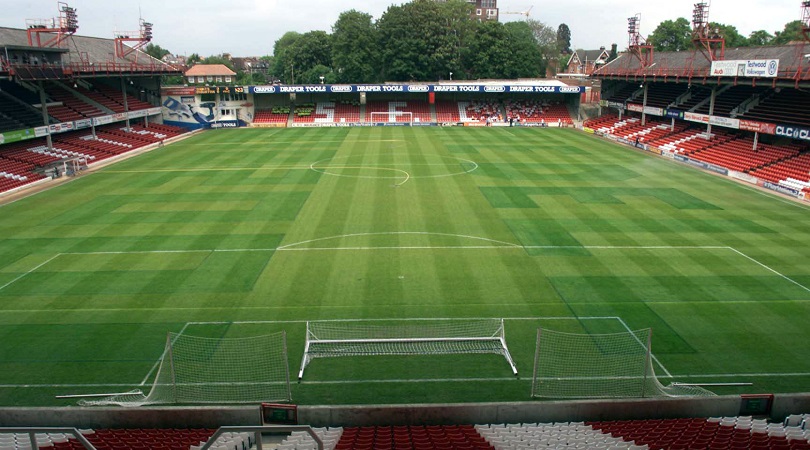
The Dell (Southampton)
When the rent at Hampshire County Cricket Club’s County Ground became too high towards the end of the 19th century, Southampton decided to build their own home. Saints beat Brighton United 4-1 in the inaugural game at The Dell in 1898; three years later, England triumphed over Ireland in the first international held at the south coast stadium.
The Dell became the first English ground to have permanent floodlights installed in 1950, while the attendance record was set when 31,044 fans watched Manchester United defeat Southampton 3-0 in 1969. The stadium’s most distinctive end was the asymmetrical Milton Road Stand, which was shaped like a wedge and featured just five rows of seats at its shallowest point.
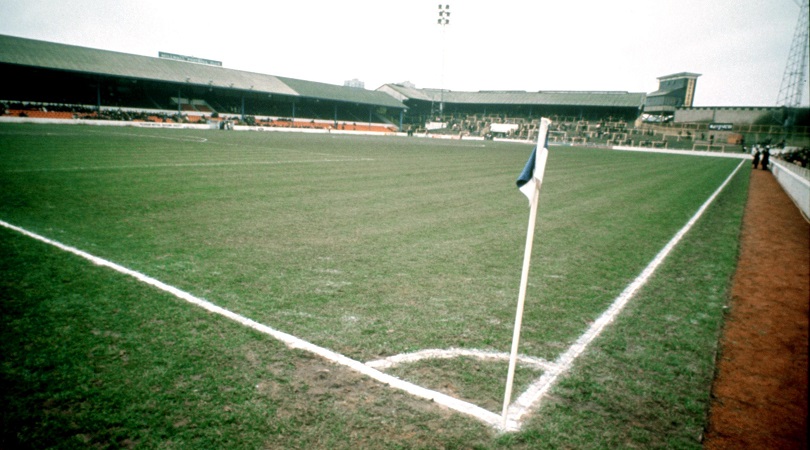
The Den (Millwall)
The Den was always known for its intimidating atmosphere, which can be traced back as far as the early part of the 20th century. Whereas most clubs’ fans showed their appreciation for good opposition play, the ‘Millwall Roar’ saw home supporters adopt an uncommonly partisan approach by cheering only for the hosts.
The Den was damaged during the Blitz in the Second World War, which forced the Lions to temporarily play matches at West Ham, Crystal Palace and Charlton. Plans to move out were hatched as early as the 1970s, but it wasn’t until 1993 that Millwall took up residence at the New Den half a mile up the road.
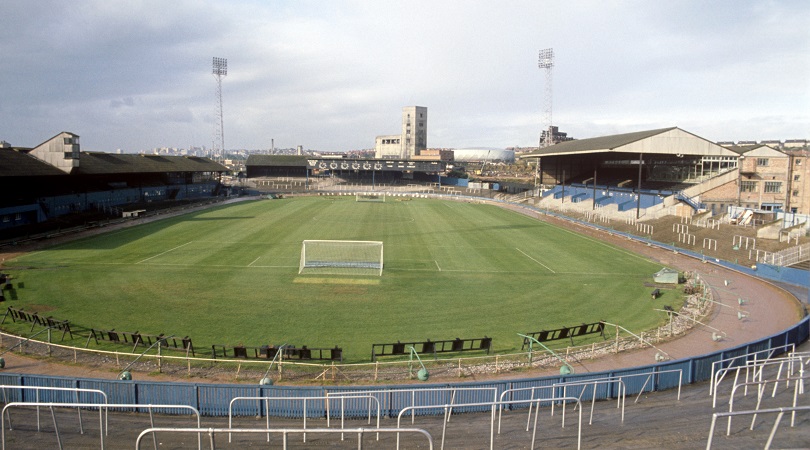
Eastville (Bristol Rovers)
Eastville was much more than a football stadium: as well as providing a home to Bristol Rovers for over a century, the ground also hosted speedway, greyhound racing and, for a short period in the 1980s, American football.
Opened in 1897, Eastville’s proximity to a gas holder gave Rovers their nickname, ‘The Gas’. The ground featured flower beds behind the two goals, while the Tote End terrace was built to follow the curve of the racing track, which meant there was no gap separating the stand behind the goal from the two which ran down the touchlines.
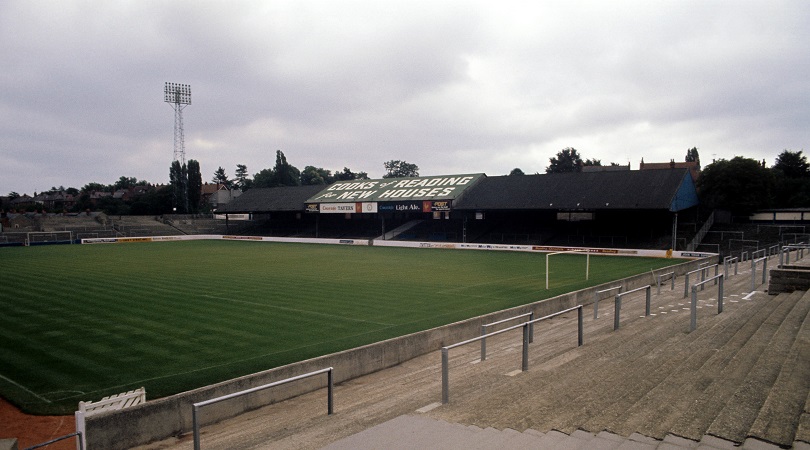
Elm Park (Reading)
Reading were kicked out of their former home at Coley Park due to excessive “rowdyism [by] the rougher elements” in 1896. The club duly moved into Elm Park later that year, remaining at the site until the opening of the out-of-town Madejski Stadium in 1998.
The Reading End and Tilehurst End ran down the two touchlines and were both uncovered terraces, while the Norfolk Road Stand and South Bank housed a combined 10,000 supporters. The record attendance came when 33,042 spectators shuffled through the turnstiles for an FA Cup tie with Brentford in 1927, but the capacity had fallen to 14,800 by the time of the ground’s closure 20 years ago.
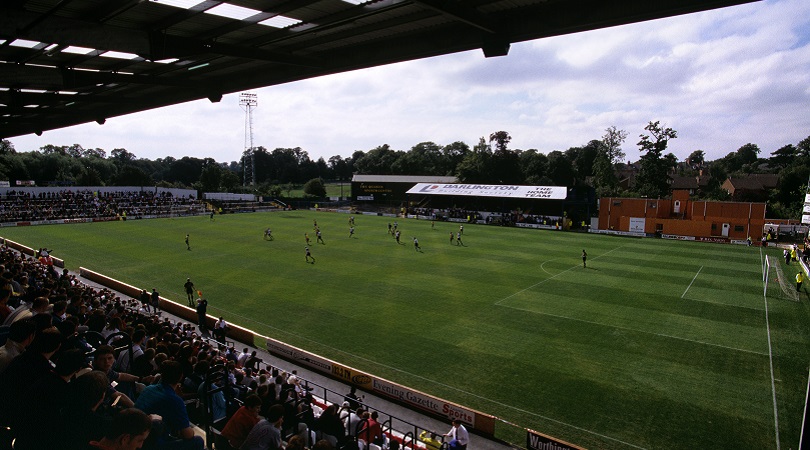
Feethams (Darlington)
Of all George Reynolds’ crimes, perhaps the most grievous was the destruction of Feethams. Thanks to his vainglory, in 2003 Darlington left behind a delightful little ground, where the club had comfortably resided since their formation in 1883.
Indeed, for a club nicknamed The Quakers, Feethams was gentility personified. After entering through the turnstiles, home supporters walked past the cricket pitch which predated the football ground – and for many years, fans could switch ends at half-time.
Only once in Darlington's history did average crowds at Feethams exceed 10,000, so how they were going to fill an £18m out-of-town 25,000-capacity stadium was never clear.
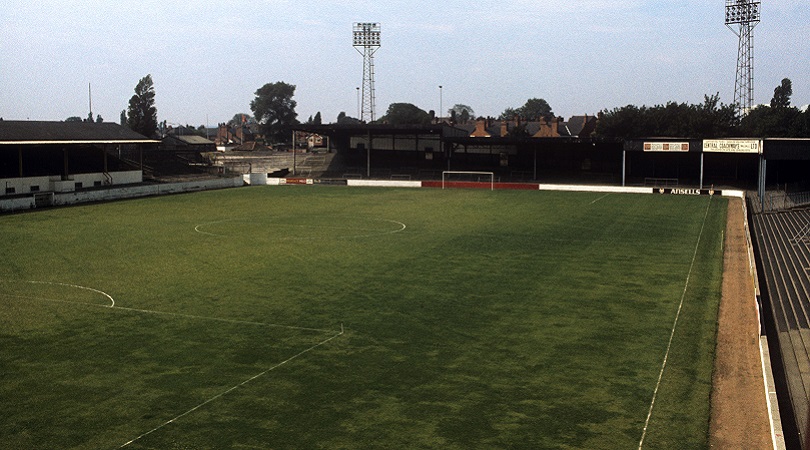
Fellows Park (Walsall)
A crowd of 25,000 packed into Fellows Park for Walsall’s famous 2-0 FA Cup victory over Arsenal in 1932-33, a good many of them occupying the newly opened covered terrace on the Popular Side. As if in thrall to that immortal moment, between Walsall's finest hour and the demolition of the stadium in 1990, the fabric of the ground essentially remained the same.
Opened in 1895, it was known as Hillary Street until 1930, when it was renamed after a board member. The Saddlers retained the link with the naming of the HL Fellows Stand at the nearby new-build Bescot Stadium.
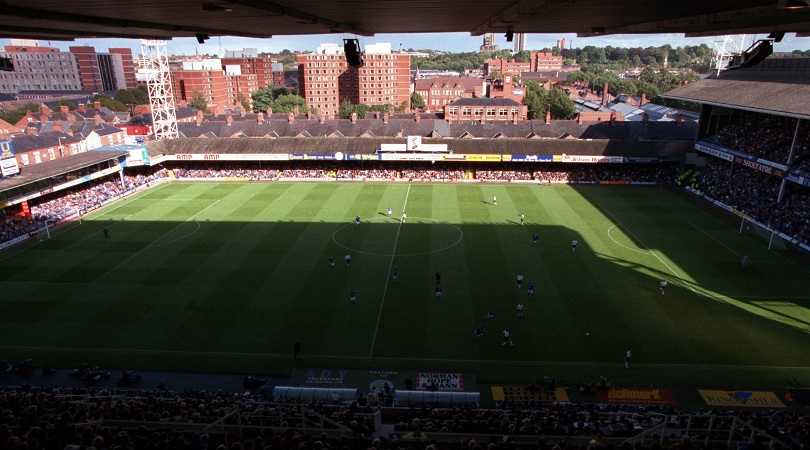
Filbert Street (Leicester)
Leicester Fosse, as the club were known back then, moved into Filbert Street shortly after celebrating their seventh birthday in 1891. A new main stand was constructed two years after the club changed their name to Leicester City in 1919, before the ground’s capacity was increased to 42,000 after a rebuild necessitated by bomb damage suffered during the Second World War.
The move to an all-seater stadium was completed in 1994, with Filbert Street then able to hold 21,500 fans. Further renovation proved difficult, though, prompting Leicester to move to the larger King Power Stadium in 2002.
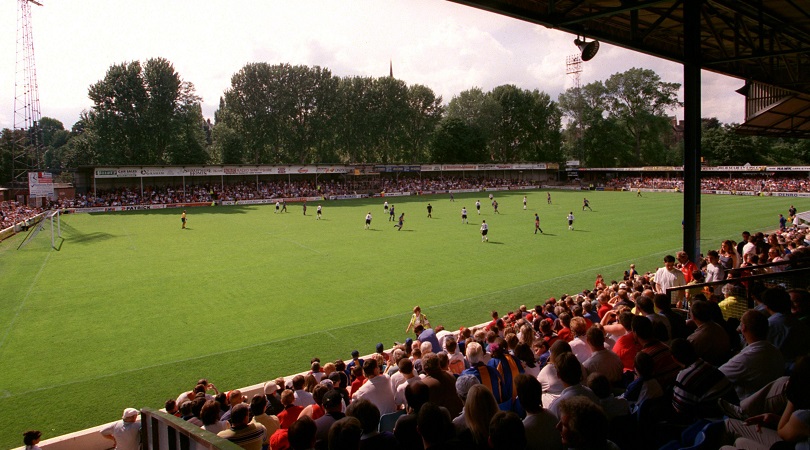
Gay Meadow (Shrewsbury)
Gay Meadow was a site for various public events long before Shrewsbury made it their home in 1910, with fairs and travelling circuses entertaining crowds on a regular basis – which, it’s widely believed, explains the name ‘Gay’.
The Shrews abandoned the pitch at the nearby Copthorne Barracks 10 years into the 20th century and remained at Gay Meadow until 2007, when the ground was demolished. Its location on the banks of the River Severn made it a picturesque stadium, although the close proximity to water often proved troublesome, with Town forced to hire a local coracle maker to retrieve any lost balls in his boat.
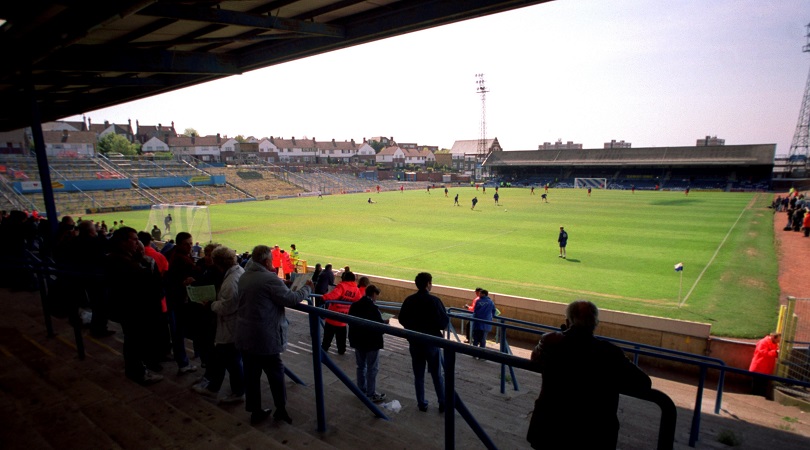
Goldstone Ground (Brighton)
The Goldstone had a heck of a send-off. On the morning of 26 April 1997, Albion were 92nd in the league – but valedictory victory sent them above Hereford, where they drew the following week to survive. The club would have to spend two years groundsharing at Gillingham and then another 12 at the Withdean athletics stadium.
Deeply indebted and equally unpopular, the board had sold the Goldstone without fan consultation. Named after a landmark local rock, the place where David Beckham made his professional debut in September 1992 was earmarked for housing but is now a retail park.
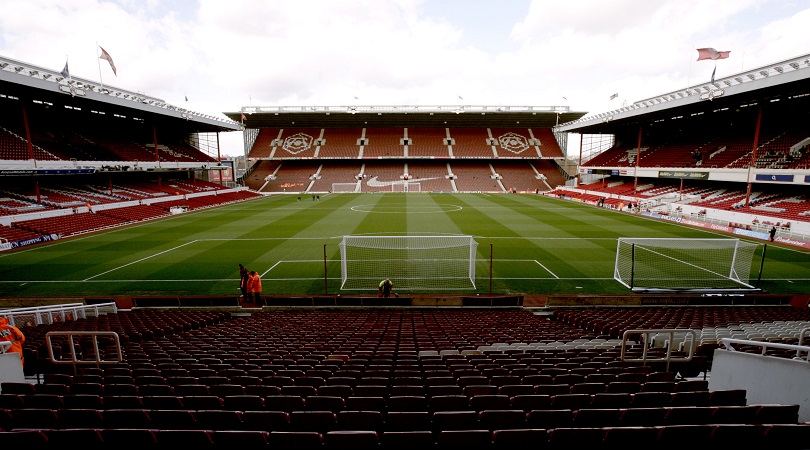
Highbury (Arsenal)
Arsenal’s move to the Emirates Stadium has been an unqualified success in terms of revenue and profile, but some supporters still pine for their former home. Highbury was one of the most celebrated stadiums in the country, with its marble halls and art-deco architecture the stuff of legend.
Arsenal moved from south London to north when Highbury opened in 1913, with the original lease including terms which forbade the sale of “intoxicating liquor” at the ground. Designed by prominent stadium architect Archibald Leitch, the 38,419-seater arena (it held 73,000 at its peak) was the Gunners’ home until 2006.
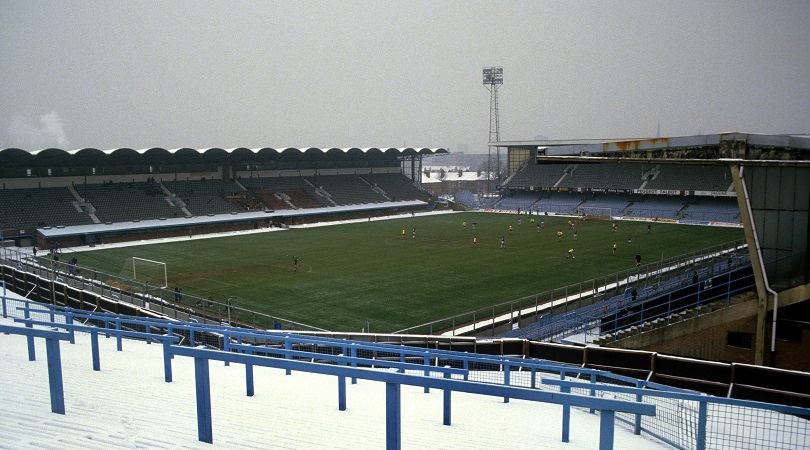
Highfield Road (Coventry)
Coventry’s relocation to the Ricoh Arena has been largely disastrous, with the club even forced to temporarily play their home games in Northampton in 2013-14 after a rent dispute at their out-of-town home.
Sky Blues supporters could hardly have envisioned such a nightmare situation unfolding when they left Highfield Road in 2005. Coventry’s base for 106 years, the ground became the English league’s first all-seater stadium in 1981, although terraces were re-installed a couple of seasons later. The stadium was demolished in 2006 and replaced by housing.
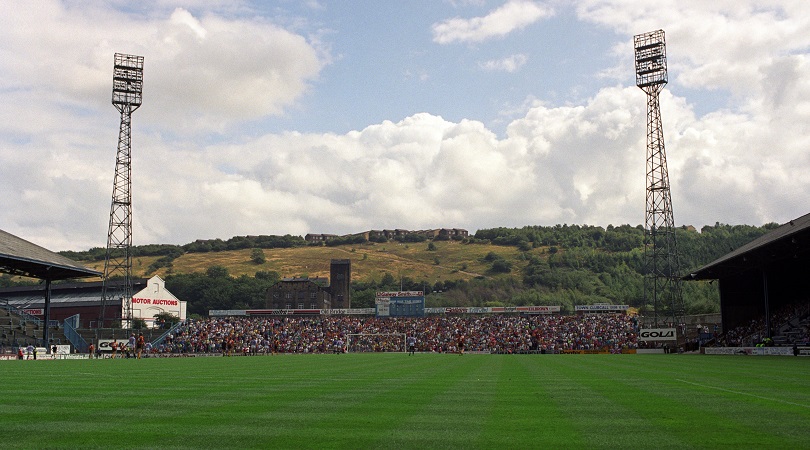
Leeds Road (Huddersfield Town)
Scottish civil engineer Archibald Leitch, whose influence was seen at almost every major ground in England built between 1899 and the Second World War, designed Huddersfield’s home in the early 1900s.
The colossal paddock on the Popular Side was one of the great sights of English football, while the Dalton Bank was never covered – and really quite cold for visitors unprepared for a Pennine winter.
The record attendance of 67,037 was set in 1932 for an FA Cup tie against Arsenal, led by former Town title-winner Herbert Chapman. But the capacity was down to 17,000 by the time the Terriers left in 1994 for what was then the Alfred McAlpine Stadium.
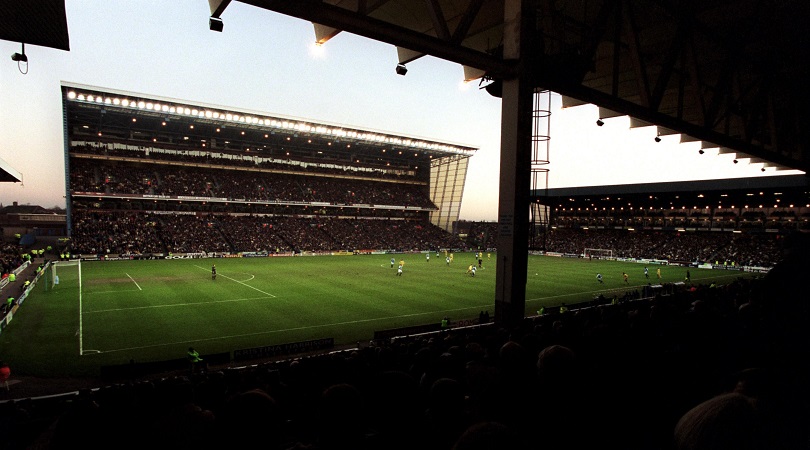
Maine Road (Manchester City)
If Sheikh Mansour’s 2008 takeover transformed Manchester City as a club, the move to the City of Manchester Stadium five years prior set the wheels in motion. Maine Road had been their home since 1923, with the initial decision to relocate from the south to the east of the city seen as controversial in the eyes of many supporters.
Labelled the “Wembley of the north” due to its regular hosting of cup games and England matches, Maine Road was even used by Manchester United after Old Trafford was damaged during the Second World War. By the time of its demolition in 2004, the stadium featured four stands of differing heights and architectural style, largely as a result of the need to modernise in accordance with the Taylor Report.
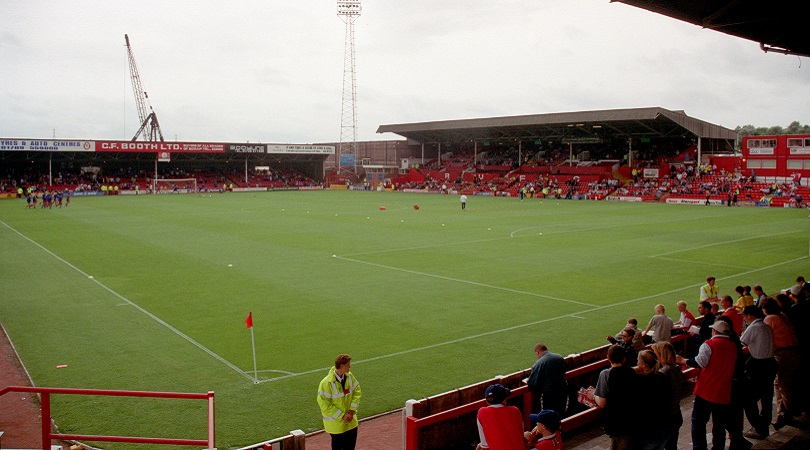
Millmoor (Rotherham United)
Away fans who risked the sometimes threatening trip down the narrow Millmoor Lane would be rewarded with the Railway End’s superb acoustics and pleasing view of a typical 20th-century English ground: large home end (with glimpses of local buses flying upwards past the roof), ageing main stand and curious “other side” (of which the roof covered only about a third), all tightly packed up against one of the country’s smallest pitches.
Used for 101 years from 1907, an increasingly delapidated Millmoor fell victim to financial troubles: the club, in administration, couldn’t agree terms with the ground’s owners. They camped at Sheffield’s awful Don Valley Stadium for four years until the opening of the New York Stadium. Millmoor’s pitch is still in use for amateur teams, who play among the ghosts of yesteryear.
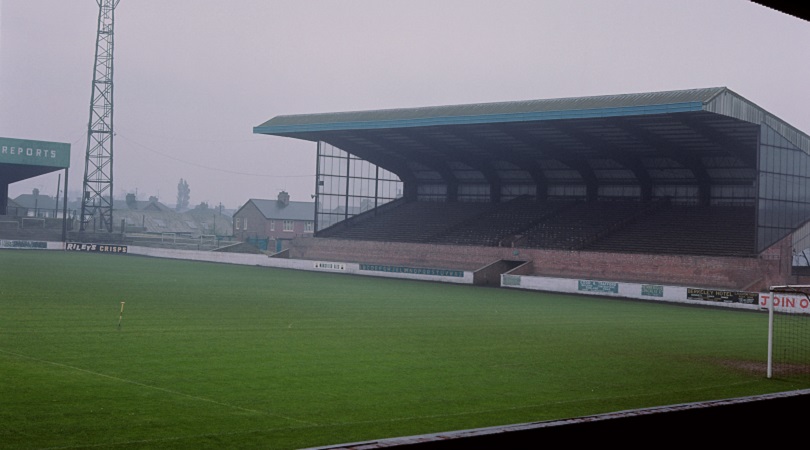
Old Showground (Scunthorpe)
Numerous English clubs moved into new stadiums in the 1990s and 2000s, but Scunthorpe were the first in the modern era when they swapped the Old Showground for Glanford Park in 1988. “There were a lot of memories wrapped up in that old ground,” Steve Cammack, the club’s record goalscorer, told FourFourTwo in 2017. “I don’t think anyone really knew why we had to leave.”
The Old Showground was built in 1867, but its most notable feature only came along in 1958: the country’s first cantilevered stand, which afforded spectators an unimpeded view of the pitch. The stadium’s record attendance was set when 23,935 fans watched Scunthorpe take on Portsmouth in 1954.
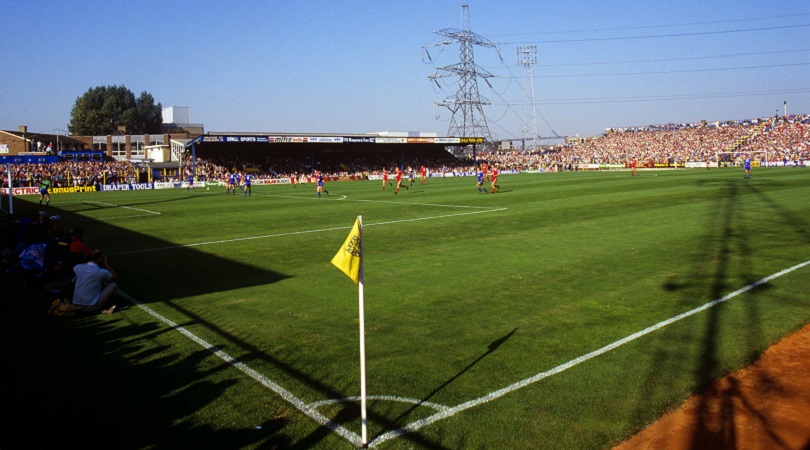
Plough Lane (Wimbledon)
Beloved by Wimbledon fans but loathed by visiting players and supporters, Plough Lane went from disused swampland to England’s top flight. Its cramped confines and singular lack of creature comforts entirely suited a team who delighted in scything down the high and mighty.
As Wimbledon rose from the Southern League to the First Division, Plough Lane remained stubbornly unchanged. The Main Stand and prewar South Stand opposite it didn’t stretch the full length of the pitch, the West Terrace had a minimal roof and the (away) Wandle End none at all.
After a turbulent decade and a half, AFC Wimbledon hope to move into a re-developed Plough Lane in 2020.
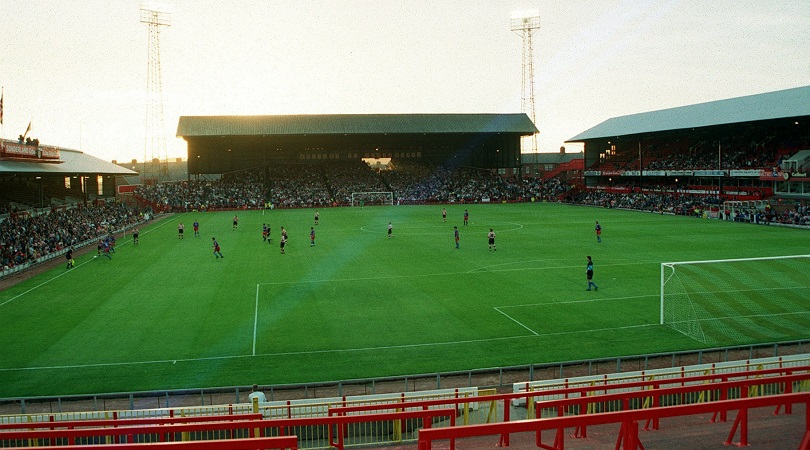
Roker Park (Sunderland)
Sunderland and Middlesbrough’s grounds were the north-east venues used for the 1966 World Cup – Newcastle’s St James’ Park was adjudged not good enough – and there was a time when one could no more imagine Roker Park being knocked down than one could foresee the closure of the mines and the shipbuilding industry that had long sustained Sunderland.
However, the Taylor Report rendered Roker redundant, unsuitable for the all-seater era, and it closed its gates for the final time in its centenary year of 1997. The site is now a housing estate.
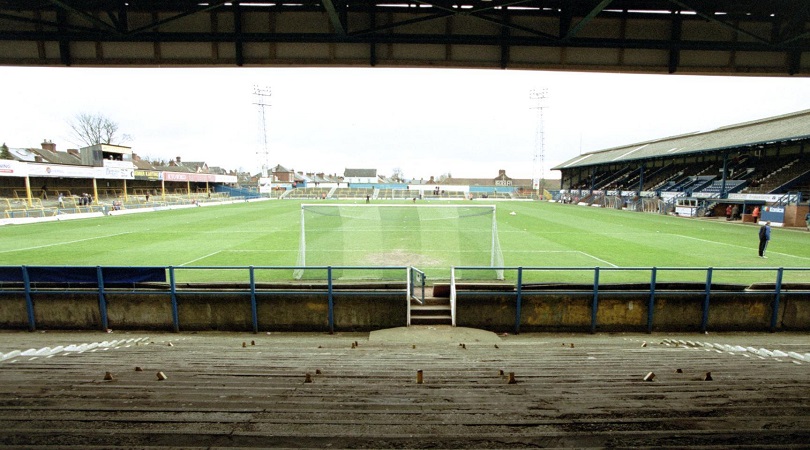
Saltergate (Chesterfield)
Chesterfield’s home between 1871 and 2010 was officially called the Recreation Ground, but fans began referring to the stadium as Saltergate – named after the road on which it was located – as long ago as the 1920s. The Spireites initially shared their home with Chesterfield Cricket Club, but their departure in 1894 saw the football team become sole tenants.
Saltergate’s record attendance was set in 1938, when 30,561 supporters filled the terraces for an FA Cup tie with Tottenham. A financially-stricken Chesterfield considered moving out in the early 1980s, but the club stayed put for almost three decades more, eventually relocating to the Proact Stadium eight years ago.
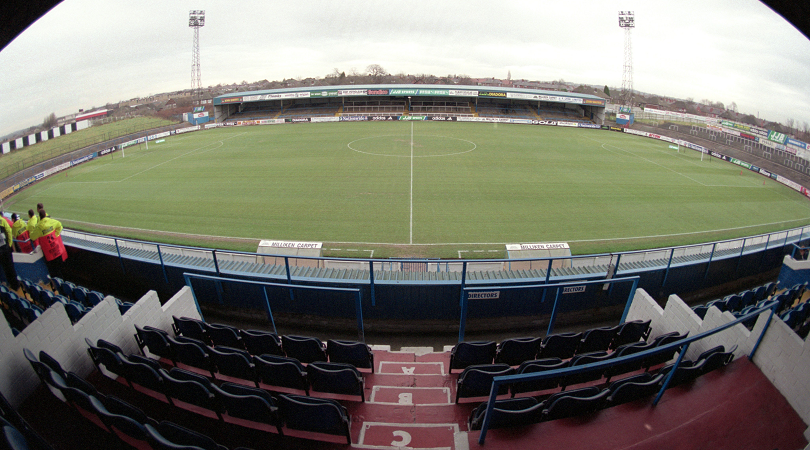
Springfield Park (Wigan Athletic)
Opened in 1897, Springfield Park saw off its first four football club tenants – Wigan County, Wigan United, Wigan Town and Wigan Borough, all of whom were dissolved – and was also used for rugby, wrestling, horse-trotting and cycling (the latter accounting for its distinctive curved-bank ends).
Borough made it into the Football League but resigned in 1931, and Wigan waited 47 years before the Latics re-joined the big boys. At that point Springfield Park's capacity was given as a rather generous 30,000, but by the 1990s this had shrunk to a more realistic 7,201. Wigan left for the JJB Stadium in 1999.
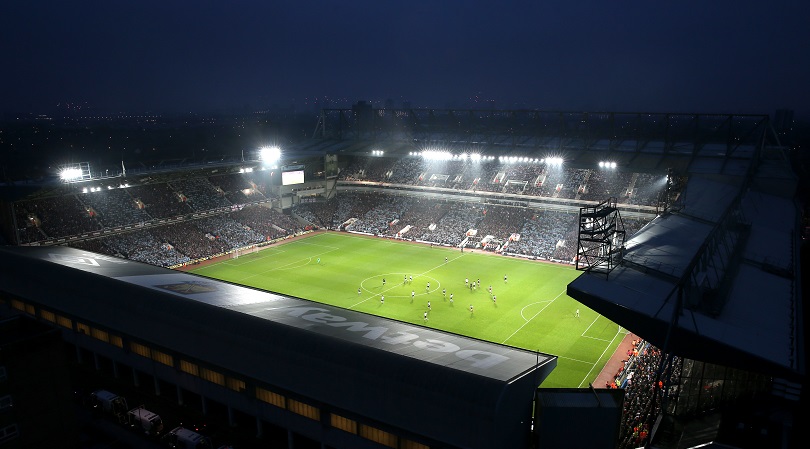
Upton Park (West Ham)
West Ham’s relocation to the London Stadium hasn’t gone anywhere near as smoothly as the club’s owners would have wanted. Part of that is due to the incongruous location and design of a ground initially built for the 2012 Olympic Games, but much of the fans’ unhappiness stems from what was left behind.
Upton Park was one of the most celebrated stadiums in the country before its demolition in 2016. The Hammers made it their home upon completion in 1904, although they were forced to temporarily move elsewhere when a V-1 flying bomb fell on the pitch during the Second World War. West Ham’s final game at the ground was a dramatic 3-2 defeat of Manchester United in May 2016.
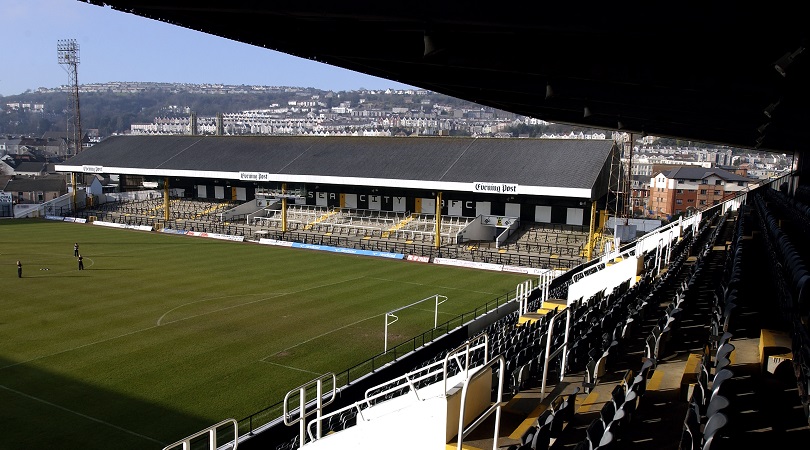
Vetch Field (Swansea)
The Who and Stevie Wonder were among the high-profile musical artists to play at Vetch Field – named after the type of plant which used to grow on the surface – during its 93-year history. Swansea’s long-time home also hosted 18 Wales games.
The record attendance was set in 1968, when 32,796 spectators squeezed in to watch the Swans do battle with Arsenal in the FA Cup fourth round. The ground became run-down as time went on – the final iteration of the Centre Stand only ran three-quarters the length of the pitch – and the Welsh outfit swapped Vetch Field for the Liberty Stadium in 2005.
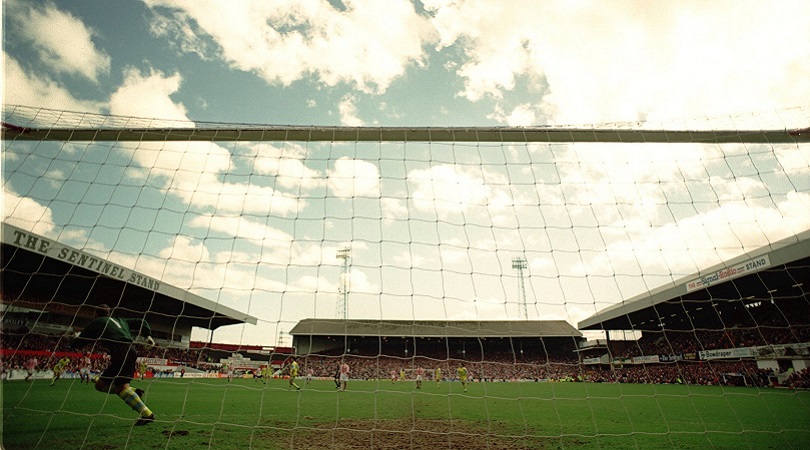
Victoria Ground (Stoke)
Opened in 1878, the Victoria Ground was the oldest operational league stadium in the country until its demolition in 1997. Stoke’s long-time home originally featured an athletics track which resulted in an oval-shaped arena, but significant renovation was carried out when the club returned to the Football League in 1919.
The Victoria Ground took on a different role during the Second World War, when the Butler Street Stand was used as an army storage camp. The ground continued to be updated throughout the 1960s, 1970s and 1980s, but after the Taylor Report the Potters relocated from Victoria to Britannia.
Greg Lea is a freelance football journalist who's filled in wherever FourFourTwo needs him since 2014. He became a Crystal Palace fan after watching a 1-0 loss to Port Vale in 1998, and once got on the scoresheet in a primary school game against Wilfried Zaha's Whitehorse Manor (an own goal in an 8-0 defeat).

